The Next Evolutionary Step in Drone Design
2018-03-20
According to some, the commercial significance of unmanned aerial vehicles (UAVs), or drones as they are more commonly known, could be as important as the internet. High profile applications such as aerial photography and videography, which have largely been democratized by drones, have mass appeal and correspondingly high volumes. More esoteric uses include agricultural management, and their use is expected to increase in medical applications.
The concept of ‘drones as a service’ has already emerged thanks to companies offering a turnkey solution for businesses. Clarification around legislation has arguably helped rather than hindered the burgeoning industry, albeit with restrictions on overall payloads, but their ascendency is all but guaranteed. Large organizations such as Amazon and Facebook are actively developing programs to use drones for the delivery of goods and internet connectivity in remote places, respectively.
These emerging applications will increasingly rely on autonomy, and as such, drones could well be the first form of truly autonomous vehicle that is fully integrated into society. This is an active research area, with commercial systems already emerging such as home monitoring drones that can autonomously navigate a building’s perimeter when movement is detected and relay what it sees to the homeowner over the internet.
As well as being unmanned, drones are also untethered; compact systems that comprise power, processing, and payload. In order to be really useful they need to be stable and efficient, even under hazardous and changeable weather conditions. As well as operating for as long as possible on a single charge, they will inevitably need to be able to dock themselves in order to recharge, enabling them to operate autonomously almost indefinitely. This level of precise control and navigation is creating demand for new technologies and highlights two of the most critical features for drone development: motor control and navigation.
Electronic speed control
As a system, drones can be described in terms of functional elements that include the flight controller, electronic speed controller (ESC), battery, and payload. It is relevant that the ESC is separate from, but still managed by the flight controller. This is predominantly because it is a complex function that benefits from a dedicated solution.
The ESC is responsible for controlling the speed of each motor, and as such, there is often one dedicated ESC for each motor. In order to coordinate their operation, all ESCs must be able to communicate with each other, either directly or indirectly via the flight controller; in a typical drone there would likely be four ESCs and four motors. The ESC has become an area of excellence, often presented as a complete sub-system that can be easily integrated, and there are a small but growing number of ESC solutions now available.
Because stability and efficiency are crucial in drone technology, the way the motors are controlled is fundamental to a drone’s operation. The methodology that many ESC providers employ is field oriented control (FOC), a technique that controls the torque of the motor, and through that, the speed. When implemented well, FOC delivers rapid changes in acceleration without introducing instability, allowing drones to perform complex maneuvers while maximizing efficiency. Rapid calculation of drive vectors is critical in FOC, which is why it has become a focus for suppliers of microcontrollers targeting motor control in general, and ESCs in particular.
The most favored form of motor used in drones today is the brushless DC motor, thanks to its small size, relatively low cost and durability. In a bid to lower the bill of materials further, drone manufacturers will typically employ a sensorless topology; that is, the position of the motor is determined through monitoring the motor’s condition rather than the rotor’s position. The control of sensorless BLDC motors through FOC algorithms is complex, and is another reason why turnkey solutions have started to emerge from leading microcontroller manufacturers.
One example is the STEVAL-ESC001V1 electronic speed controller (ESC) from STMicroelectronics, which brings together STMicroelectronics’ STM32F303CBT7 microcontroller and motor control SDK with its L6398 driver and STL160NS3LLH7 power MOSFETs. Together they form a complete solution for driving a single three-phase brushless motor, either a BLDC or PMSM (permanent magnet synchronous motor) using a sensorless FOC algorithm. The power MOSFETs are N-Channel 30 V, 160 A STripFET H7 devices. The design can deliver a maximum RMS current of 20 A, which is enough power to drive the motors used in professional drones. Figure 1 shows a block diagram of the solution.
STMicroelectronics points out that the use of FOC, rather than a trapezoidal control algorithm as used in some ESCs, delivers better torque control, while the implementation it provides also offers active braking and energy recovery during deceleration.
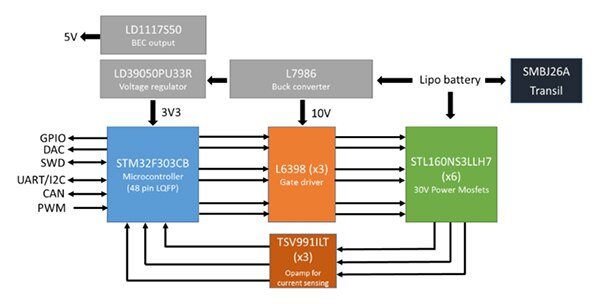
Figure 1: A block diagram of the STMicroelectronics STEVAL-ESC001V1 electronic speed control solution based on field oriented control, which was developed for drones.
The populated board, which measures slightly less than 30 mm by 60 mm, is shown in Figure 2 (top side) and Figure 3 (bottom side), highlighting the key functional components.
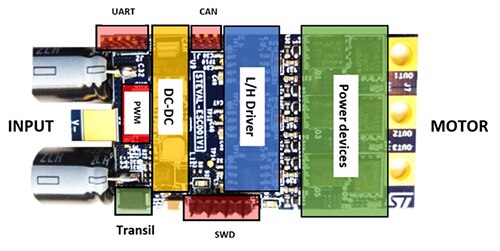
Figure 2: The STEVAL-ESC001V1 (top side).
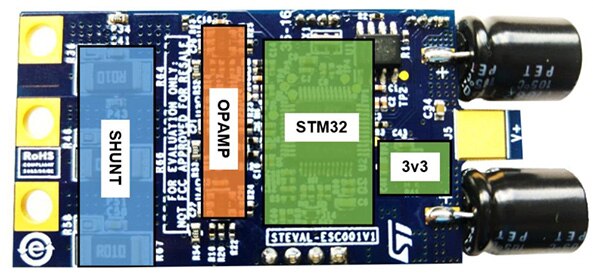
Figure 3: The STEVAL-ESC001V1 (bottom side).
The evaluation board is programmed using the ST-Link/V2 programmer, and the firmware can be configured using the ST motor control workbench (a short video introduction to using MC workbench is available). Using this software and the evaluation board, engineers can profile a motor and compile the firmware needed to drive that motor. While the signals used to drive each phase of the motor are calculated and applied by the board, a PWM signal is used to set the motor’s speed. As shown in Figure 4, a pulse of between 1060 μs and 1860 μs is used to set the motor speed between its minimum and maximum, respectively.

Figure 4: The PWM signal used to regulate the speed of the motors controlled by the STEVAL-ESC001V1.
ESC reference design
Motor control in general is an increasingly important application area for many semiconductor manufacturers, particularly those with a strong microcontroller portfolio. This includes Texas Instruments, which has developed and productized an FOC solution that is supplied pre-installed in the ROM of select Piccolo MCUs and accessed through APIs.
Without sensors to provide feedback about the motor’s position, the choice is to run the motors in either an open-loop configuration or use some other form of feedback. It should be noted that a closed-loop configuration provides greater control and leads to better overall performance. Providing the feedback necessary for the closed-loop operation falls to a dedicated firmware function known as an observer, which makes use of the back-EMF generated in the motor’s windings to estimate its position. For this reason, the firmware is also known as an estimator.
In TI’s solution, the estimator firmware is referred to as InstaSPIN-FAST, which stands for flux, angle, speed and torque. FAST is described as a universal three-phase motor software encoder, able to work with a range of motor implementations including both synchronous and asynchronous DC and AC motors. It is complemented by the FOC torque controller software, InstaSPIN-FOC, which forms part of TI’s MotorWare software package; a free to use, free to download solution. However, the FAST part of the solution is proprietary and only supplied as ROM-based code in supported MCUs; while InstaSPIN-FOC may execute from RAM or Flash, the FAST algorithm must always execute from ROM.
A high-speed sensorless FOC reference design for drone ESCs from Texas Instruments provides a simple way to evaluate the InstaSPIN technology. It is based on the C2000 Piccolo LaunchPad LAUNCHXL-F28069M development board (Figure 5) and the DRV8305EVM 3-phase motor drive BoosterPack evaluation module (Figure 6).
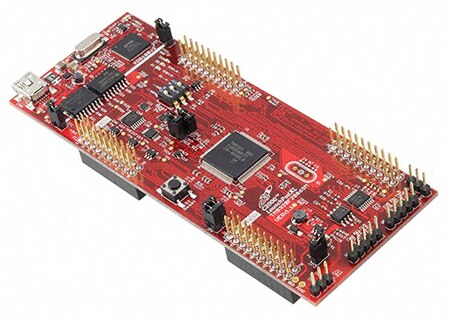
Figure 5: The C2000 Piccolo LaunchPad LAUNCHXL-F28069M development board.
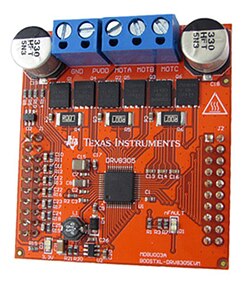
Figure 6: The DRV8305EVM 3-phase motor driver BoosterPack evaluation module.
In such a competitive space, performance matched with ease of use can often be very persuasive reasons to choose a particular solution, and in this respect TI has made every effort to stand out from the competition. For example, the control algorithm needs to understand certain parameters pertaining to the motor being controlled, but TI maintains that its solution requires fewer motor parameters to be provided, to the point that no data sheet is required. Furthermore, once the motor has been identified, the InstaSPIN-FOC and FAST solution needs no tuning, unlike most other solutions.
The accuracy with which the estimator operates is another critical parameter, and here, TI states that its solution can begin tracking within one electrical cycle and can maintain accuracy at less than 1 Hz; other solutions are typically only accurate at frequencies over 5 Hz and can become compromised at high frequencies. These benefits also mean that TI’s solution can deliver 100% torque at start-up and is completely stable at zero speed.
The availability of development platforms and turnkey solutions like these mean it is now easier to get started with drone design. TI states that its solution could be up and running in under two minutes, highlighting how advanced FOC solutions have become in a very short period of time. The same is not necessarily true for navigation, however, but it is advancing rapidly and it is inevitable that there will soon be solutions that can provide full autonomous navigation for unmanned vehicles of all varieties.
Differential GNSS
Navigation is predominantly complicated by one thing: obstacles. Without any obstacles to avoid, cars would already be self-driving, but the fact is getting from point A to point B would be a lot simpler if it were a straight line without anything in between. Fortunately, in the sky, that is often the case. Autonomous drones are likely to be commonplace sooner than later for this very reason. Of course, it will still be necessary to consider collision detection and avoidance technology, but in general, objects that fly have a big advantage over those that do not.
The use of global navigation satellite systems (GNSS) is now synonymous with navigation, and when used alongside mapping software it becomes a powerful combination. However, GNSS is well known for only being accurate to within meters, rather than the centimeters that would be necessary for an autonomous drone that may itself measure less than a meter. For some applications, such as the inspection of large open areas or many kilometers of over-ground oil pipes, this may be acceptable. For emerging drone applications, such as the delivery of goods, much greater accuracy will be necessary.
Without an infrastructure supporting this level of accuracy, autonomous devices will rely on machine vision to help them navigate the real world. However, there are solutions emerging that provide a level of accuracy suitable with some applications. They employ differential GNSS (DGNSS), which uses correctional data provided by a base station to improve and correct positioning data derived by a moving object, referred to as the rover.
The technique is known as real time kinematics (RTK) and covered by an internationally recognized standard defined by the Radio Technical Commission for Maritime Services organization (RTCM). It relies on a real-time communication channel between the base station and the rover, and it is most commonly applied in high-end surveying equipment. However, the technique is starting to be made available in modules positioned as mass market solutions. One example is the GNSS positioning modules from u-blox, including the NEO-M8P-0 and NEO-M8P-2 modules, designed to enable rovers and base stations, respectively.
The company states that the modules have been designed to meet the needs of unmanned vehicles in general, but include features that make them particularly suitable for UAVs, such as moving baseline mode; a feature that enables the base station to move as well as the rover. This could be relevant for a delivery drone that launches from and returns to a larger, more traditional delivery vehicle servicing a neighborhood, for example.
The modules are based on the u-blox M8 GNSS receiver, which is compatible with the GPS, GLONASS and BeiDou satellite navigation networks, and is able to use GPS and GLONASS or BeiDou concurrently, providing a faster time to first fix. However, u-blox points out that if RTK update rate is critical, then they should be used in GPS mode only. Figure 7 illustrates how the modules are intended to operate.
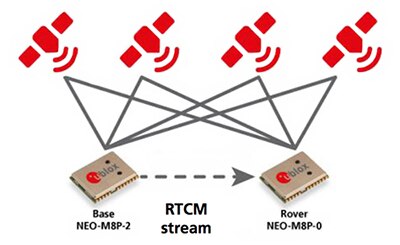
Figure 7: Using the u-blox NEO-M8P modules to create a DGNSS solution with centimeter accurate positioning.
The base station supplies the rover with a stream of RTCM 3 messages (reference station parameters). The rover must then resolve the carrier phase ambiguities, at which point it can enter RTK fixed mode and start to achieve centimeter accurate positioning data. According to u-blox, this process typically takes less than 60 seconds, and is referred to as the convergence time. The rover will only enter RTK fixed mode when the receiver has visibility to at least six satellites with continuous phase lock; if working concurrently with the GLONASS system, it needs at least two satellites from the second system to be visible, and with BeiDou this increases to three.
When operating in RTK mode, the rover’s position is reported relative to the base station position. Therefore, the absolute position of the rover will be referenced to the absolute position of the base station, and the rover’s position relative to it. This is also relevant for applications where the drone needs to return to its charging station in order to recharge its batteries. When the base station is operating in moving baseline mode, its absolute position is no longer fixed. However, the rover can still maintain centimeter accurate positioning relative to it, which is applicable when a drone is operating in a ‘follow me’ mode, for example. With the introduction of DGNSS positioning, the concept of fully autonomous drones truly does start to take shape.
Conclusion
Autonomy and stability will be the key features of tomorrow’s drones. As technologies such as FOC based motor control and DGNSS become more integrated, the rapid and continued evolution of drones is assured. The availability of pre-integrated solutions like those featured here make the process of developing advanced UAVs simpler, providing opportunities for OEMs keen to take advantage of exciting new possibilities.
免责声明:各个作者和/或论坛参与者在本网站发表的观点、看法和意见不代表 DigiKey 的观点、看法和意见,也不代表 DigiKey 官方政策。




